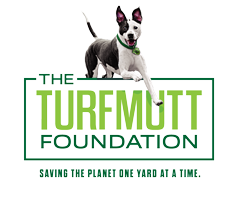Latest Posts
- Have a purpose when backyardingAugust 5 2021
- Study: Time outside alters our microbiomeAugust 4 2021
- Happy National Mutt Day from Mo-MoJuly 27 2021
- New home? Avoid these common mistakes in your yard.July 26 2021
- Infographic: Plan a backyard staycation this summerJuly 22 2021
Categories
Archive
May 5th
International Compost Awareness Week
Yes, this week, May 1-May 7, is the week for Compost. And, many of us know the value of turning food waste into rich soil for our garden plantings and the top-dressing of lawns and other perennials, annuals and shrubs.
You can find several events here across the country to celebrate the week.
We found some great advice below on the value of compost from the University of Missouri extension.
Do you have a favorite recipe for compost? Or, better yet a photo you can send us?
Why make compost?
Gardeners often have difficulty disposing of leaves, grass clippings and other garden refuse, particularly in urban areas. These byproducts of the garden and landscape can be turned into useful compost with no more effort than it takes to bag and haul them away. Home composters avoid hauling or utility costs associated with centralized composting facilities and end up with a valuable soil conditioner or mulch for the landscape and garden.
The value of compost
Good compost consists primarily of decomposed or partially decomposed plant and animal residues but may also contain a small amount of soil. Compost improves both the physical condition and the fertility of the soil when added to the landscape or garden. It is especially useful for improving soils low in organic matter.
Organic matter in compost improves heavy clay soils by binding soil particles together into “crumbs,” making the soil easier to work. Binding soil particles also helps improve aeration, root penetration and water infiltration and reduces crusting of the soil surface. In sandy soils, additional organic matter also helps with nutrient and water retention. Compost also increases the activity of soil microorganisms that release nutrients and other growth-promoting materials into the soil.
Although compost contains nutrients, its greatest benefit is in improving soil characteristics. You should consider compost a valuable soil amendment.
Compost also is a valuable mulching material for garden and landscape plants. It may be used as a top-dressing for lawns and, when it contains a small amount of soil, as part of a growing medium for houseplants or for starting seedlings.





